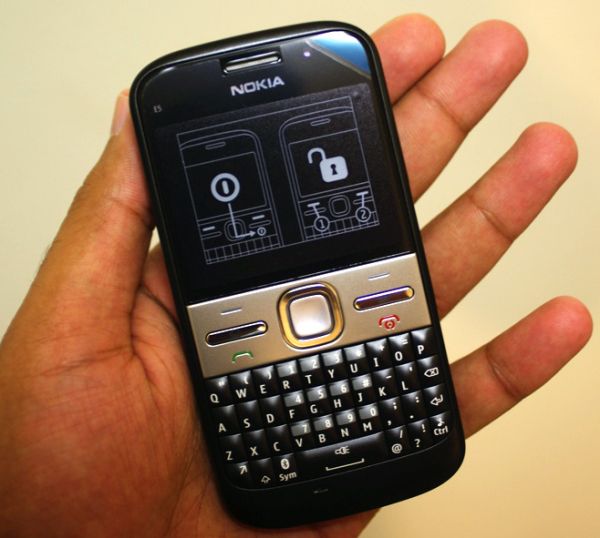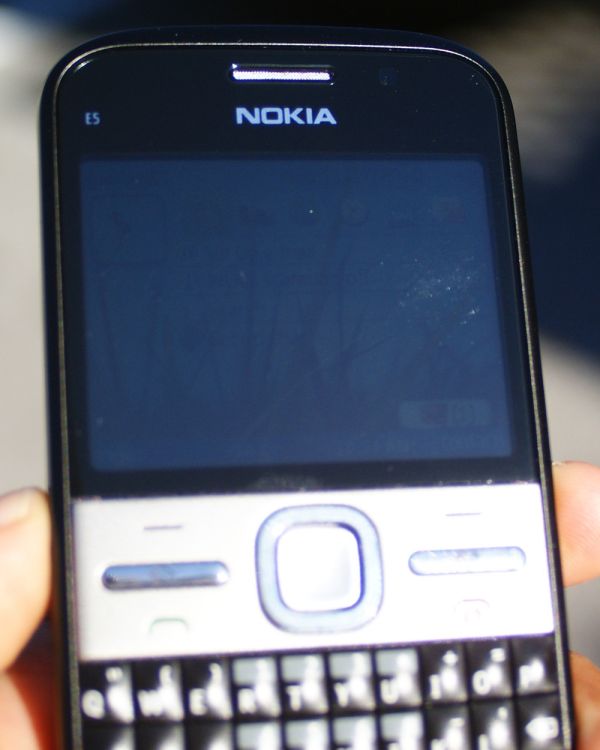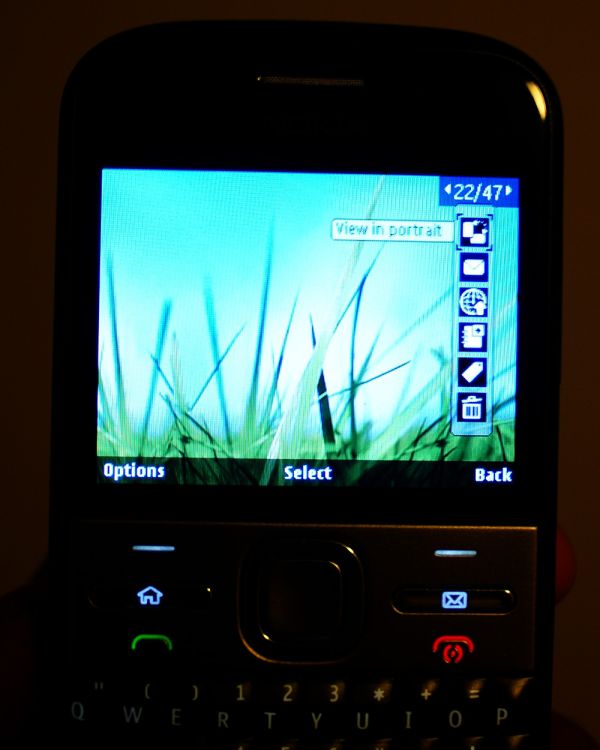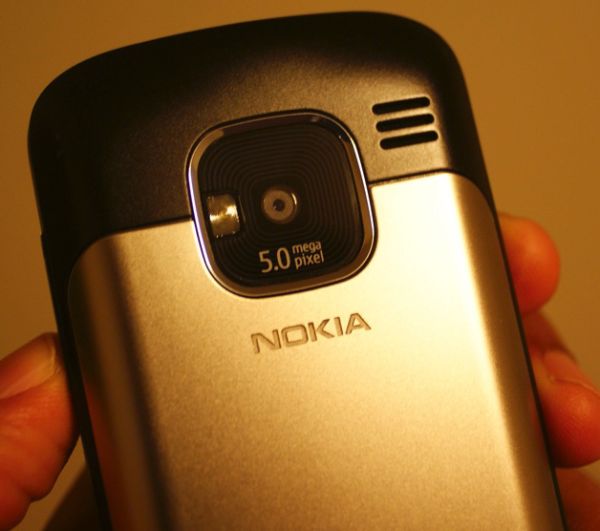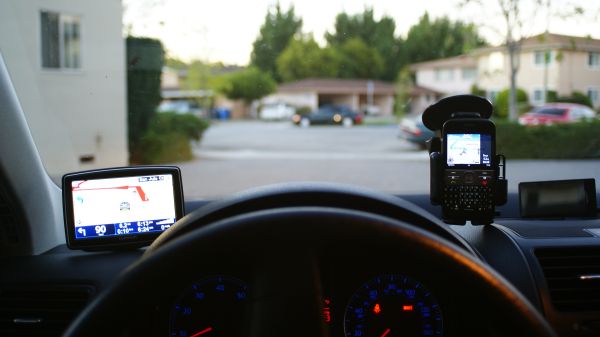
Original Link: https://www.anandtech.com/show/4026/the-nokia-e5-review-a-cheaper-e72
The Nokia E5 Review: A Cheaper E72
by Mithun Chandrasekhar on November 30, 2010 2:01 AM EST- Posted in
- Nokia
- E5
- Smartphones
- Mobile
Note to Readers: Our E5 review doesn't include all of our normal data products and objective benchmarks, as it is Mithun's first review. Mithun joins our smartphone team, and in time will be able to benchmark and test all the same things we normally include in a smartphone review. Welcome Mithun!
When Anand first asked if I wanted to review the Nokia E5-00 (referred to as E5 henceforth), I wasn’t sure what to say. Having almost exclusively used Nokia’s Symbian based smartphones for the first half of this decade, I wasn’t sure if I was supposed to be happy to meet an old friend after a long time, or loathe it thinking of the reasons I decided to move away from the platform in the first place. But then again, I realized I may actually be in a better position than some to review this device because of my prior experience with the platform. So jostling for front-page area on AT along with other, decidedly more exciting, better spec’d and feature-packed smartphones is the almost shockingly simple Nokia E5.
Joining Nokia’s business-centric E Series line of smartphones is the E5. Pegged by Nokia as the successor to the higher end Nokia E72, my impressions of the phone lead me to believe that it is more of an upgrade to the lower end E63 than a replacement for the E72; it fits right between the two. But it is in fact a worthy upgrade; the E5 is the only Series 60 phone to date with 256MB RAM onboard. It also has an ARM11 SoC running at a relatively speedy (by Nokia's standards) 600Mhz, shared with the E72. This can be attributed to Symbian’s thriftiness when it comes to resource consumption, but it is also testament to the fact that the software platform running underneath is unquestionably previous-gen and as such, doesn’t need the latest and greatest to get going.
Hardware
The E5 comes packaged with the essentials; a micro-USB data cable (that’s about 5 inches long!), a wired handsfree kit, the charger and the manuals. The E5 can be charged either using the charger or using the included micro-USB cable, which is nice given that some of their previous devices haven't come with this capability (the 5800 XpressMusic comes to mind).

The build quality, in typical Nokia fashion, is rock solid. Weighing in at about 125 grams and a shade less than 13mm thick (12.8mm to be exact), the E5 feels reassuringly good in your hands. And this is an achievement considering the fact that the only metal elements used in the phone’s exterior is the battery cover and a band housing the soft keys along with the Answer/End call keys, right above the keyboard. Speaking of the battery cover, testament to the E5’s amazing build quality is the unlocking mechanism for the battery cover. While opening it is a pain (unless you have long nails), the mechanism itself it solid and reassuring, adding to the overall solid feel of the device. The phone is better put together than most phones two or three times its price. And with the phone having shared my pocket with keys and other assortments for about 2 weeks, there isn’t a single scratch to speak of.
|
No buttons on the left or bottom; volume control flush with the device on the right; micro USB and charger port along with 3.5mm jack on top
|
||||
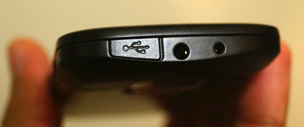 |
 |
|||
The design of the phone is very un-Nokia like. In fact, if it were not for the branding below the ear piece along with the etching on the battery cover, it would be very difficult to identify it as a Nokia. The first time I saw the E5, it struck me more as a grown-up Palm Centro than anything out of Finland! And although it may not look striking, it does look quite elegant in an understated way. Perfect for the target market.
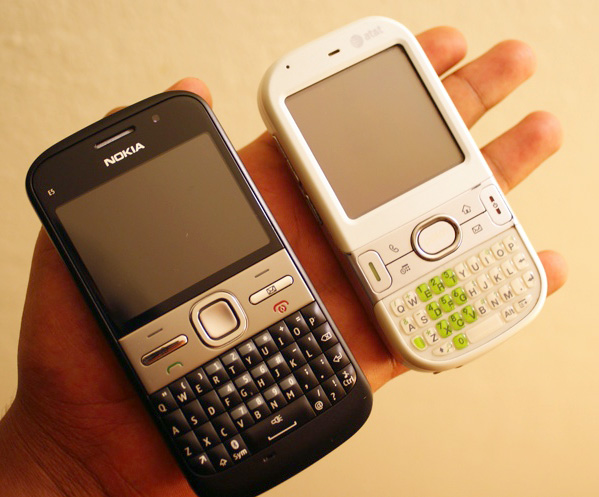
Once you get past the good build, the next thing that strikes you is the awesome keyboard. No really, it’s awesome. It’s right up there with the very best QWERTY phone keyboards. Infact I frequently found myself choosing to type out an email on the E5 even though I was right in front of my laptop. The spacing and layout is perfect and so is the contour of each key. Apart from when I had to type out special characters, I didn’t have to look at the keyboard. And unlike the E72/E63, the E5 comes with a generous sized spacebar. If you tend to type a lot of messages on the go, the Nokia E5’s heft, proportion and keyboard will make it a lot easier on your thumbs and won’t make you cringe at the thought of typing out more than 10 words on the phone.
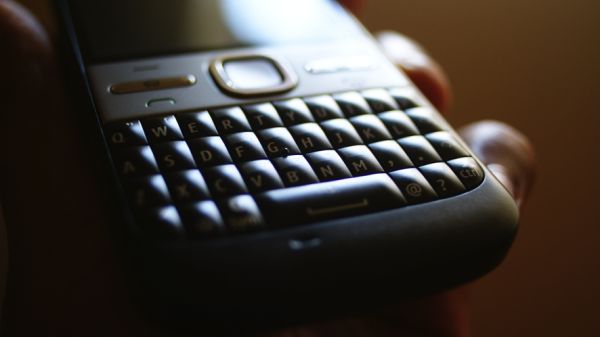
The E5’s best feature, its amazing keyboard
But something has gotta give, right? Something has - and sadly, it is the screen. Coming in at a shade less than 2.4 inches (2.36” to be exact), it is without a doubt small. Packing a low 320 x 240 resolution, this QVGA landscape is a thorough disappointment.
The screen is actually the biggest reason why I feel the E5 is not a true successor to the E72. While the latter packed a similarly small display, it was much more vibrant and readable both indoors and outside. Although the E5’s screen is usable indoors, it looks washed out; under sunlight, it is about as unusable as some OLED displays. Turning the brightness all the way up helps a bit, but having to do so every time you step outside doesn’t make sense. This is probably because the E5 has a cheaper transmissive-type LCD instead of the transflective LCDs seen in higher-end Nokia devices like the E72. As a result, the E5 tends to get washed out in direct sunlight. The E5 comes equipped with an ambient light sensor that seems to do its job well enough, except in the sun. For some reason it doesn’t max out the brightness outdoors, which would otherwise alleviate some of the display's outdoor use issues.
Camera
Moving on, we have the 5 megapixel, non-auto focus camera and LED flash on the back of the E5. It is not particularly good at anything more than candid shots in well-lit surroundings.
Although the LED flash is reasonably powerful, pictures taken in anything but perfect lighting are grainy and lack detail. The E5 does have Nokia’s Extended Depth of Field feature and it’s a nifty feature as it makes sure both the foreground and background are always in focus, thereby “eliminating” focus time. The 2592 x 1944 images are on an average about 1.5MB which means they are quite heavily compressed.
If only it had better optics to make better use of the feature. The video recording part of the phone is even worse; it can only shoot VGA/15 fps video at best. But considering the fact that this phone is targeted at the business crowd, the mediocre-at-best camera should not count against the phone.
Software
While the E5 hardware has a lot going for it, the S60 3rd Edition Feature Pack 2 running on Symbian v9.3 takes it down a few notches. Blackberry users will certainly appreciate the greater flexibility and customization the Symbian platform affords, but if you’re used any modern smartphone OS in the last 3 years or so, prepare to be confused and frustrated.
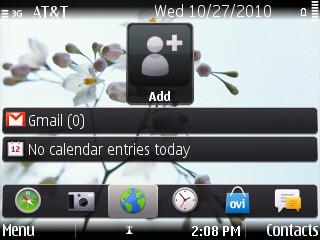
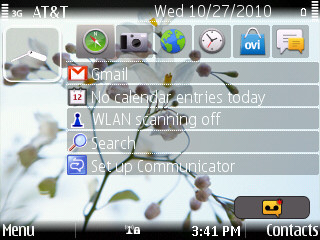
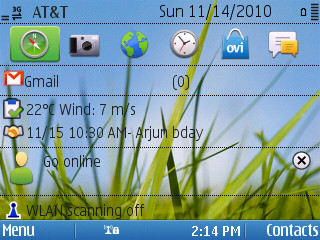
You can choose from a bunch of different home screen ‘styles’ and easily switch between presets
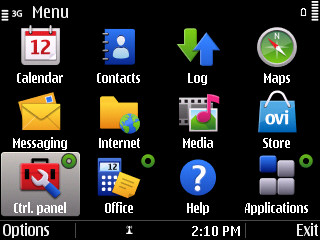
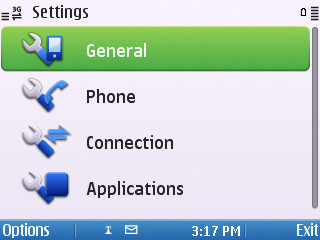
The no-frills menus in Symbian OS
The overall design is clean and simple, without any animated effects or transitions, which is why navigating between menus is snappy and the phone is for the most part pretty responsive. And considering the fact that S60 has a pretty efficient multitasking system, the overall responsiveness of the E5 helps you switch between your mailbox, calendar, contacts and browser very quickly.
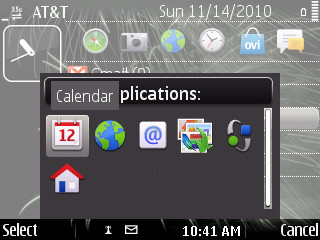
Multitasking in Symbian OS is simple and straightforward
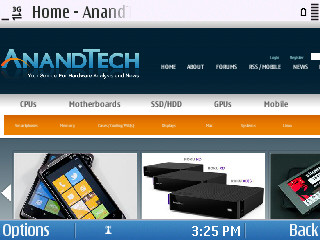
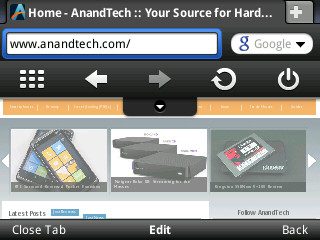
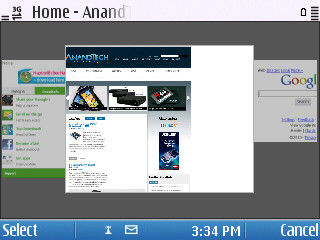
The default browser (left), Opera Mobile 10 (center) and tabbed view of “history” (right)
There was however one feature of the browser that I liked; clicking on the “Back” menu option in the browser shows a “tabbed” view of the previous pages you visited. Initially, I actually thought of them as being real tabs, but soon I realized they were just snapshots of the previous pages I had visited (the default browser doesn't have support for tabs). Nevertheless, it is the one feature that proved useful in a browser that should otherwise be avoided. To imagine the default browser is actually webkit-based! Most of these issues can be readily remedied by downloading an alternate browser such as Opera Mobile 10; a point made blatantly clear by the fact that it is one of the most popular apps in the Ovi App store. But even then, the 600Mhz ARM11 CPU seems to struggle to carry anything more than the weight of Symbian and the E5’s default apps.
There were a couple of other areas where the user experience was rather iffy. Why one has to download the Ovi Store app instead of it being preinstalled is something I really don’t understand. But navigating the store itself is not the most fluid experience either. For reasons I can't explain, the app got stuck at the end of the Ovi Store registration process thrice in a row.
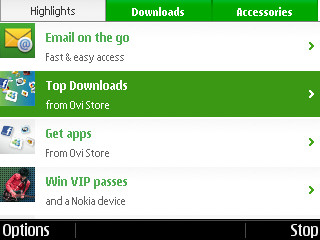
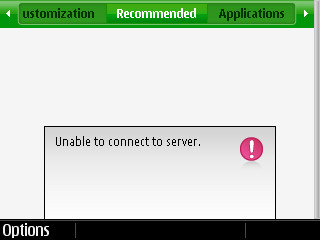
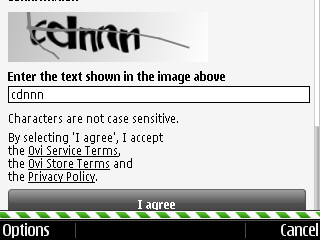
The Ovi Store (left), intermittent issues I had while trying to download apps (center, right)
Only restarting the phone solved this issue. Speaking of restarts, the E5 goes from zero to usable in less than a minute, compared to most smartphones today that easily take a good 3-5 minutes to do the same.
But it’s not all so gloomy on the software side; using Ovi Maps was one of the best navigation experiences I’ve had on any device, not just on smartphones. So much so that during the course of the 2 weeks I spent with the E5, I used it as my primary navigation device on multiple occasions. It was comparable to my dedicated TomTom GPS unit.
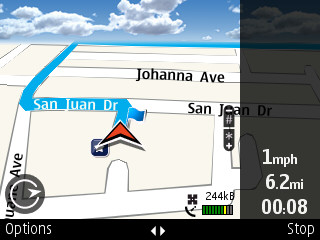
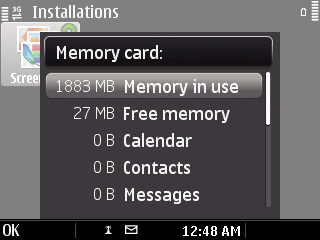
The Nokia E5 makes a very good navigation device
Honestly, if the screen was bigger and of higher resolution, I would have no qualms in using this as my only navigation unit. And unlike its closest rival in Google Maps Navigation, Ovi Maps does not require a data connection to function, which is a huge plus. Plus, the app itself is very responsive and quick to recalculate a route.
But because the maps are stored on the microSD card and Nokia just packs in a 2GB card (really Nokia?), the E5 comes out of the box with just 27MB free on the memory card. If I found any issue with the maps app itself, it was that I needed to “stop” navigation if I wanted to access any of the settings (Voices, routing etc.). This can get quite annoying but then again, not a lot of these options are to be modified regularly once set initially.
I also want to briefly mention the default ‘Gallery’ app for viewing pictures that comes on the E5. It seems like the only piece of UI on the E5 that is not a decade old. The animations are reasonably smooth and the interface looks slick and modern. In fact, it feels completely out of place on the E5.
Next we have the raison d'être for the Nokia E5: the Messaging sub-system. Here, the E5 does what it’s built to do fairly well without any major complaints. Setting up multiple email accounts is a straightforward process and you’re up and running within a few minutes. You can set up accounts for most popular email services such as Gmail, Hotmail, Yahoo and also Exchange and Lotus Notes, apart from Nokia’s own Ovi Mail service. You can also define and set up a custom account if you don’t use any of the above email services. Strangely, you have to download an app from Nokia’s website to enable push-email support, just like the Ovi Store app.
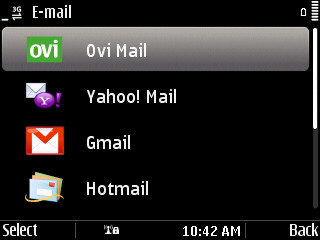
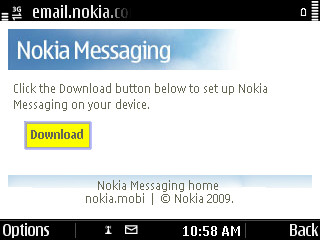

The messaging platform works well. Why doesn’t Nokia include the push-email app by default?
But once you have the Nokia Email Service app installed on the phone, and have set up a Nokia Messaging account (apparently, for which you need a subscription…which comes with the E5), there’s nothing much you need to do. I was actually quite confused by this initially because after installing the app, I didn’t get any notification of anything having happened and neither could I find any options to set up push email. But searching through FAQ’s I found out that once the app is installed, it automatically configures your supported email accounts for push functionality. You can log into the Nokia Messaging portal to set up IMAP folder syncing and other specifics.
Apart from very good email management, the E5 comes with a bunch of business-oriented apps pre-installed (Bloomberg, Quickoffice, Traveler, Active Notes etc.) and Ovi Chat, which is a multi-protocol IM client that supports Google Talk, Windows Messenger, Yahoo Messenger and Ovi Chat. Again, setting the accounts up and using the app is fairly easy and quick.
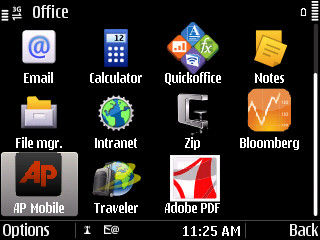
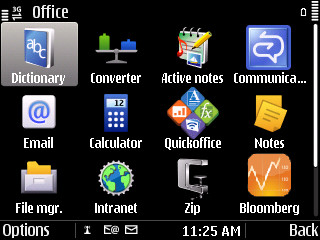
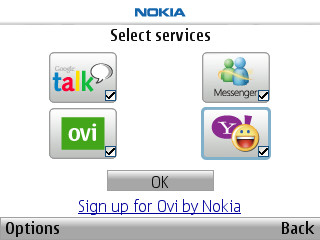
Business-oriented apps that come pre-installed on the E5 (left, center), Ovi Chat app (right)
Interestingly, the E5 also comes with a Microsoft Communicator app pre-installed. For those who don’t know about this, it is the Windows Messenger equivalent for Microsoft’s Exchange Messaging Service and has specific features targeted at business users. Since I didn’t have an Exchange account to test this with, I can’t really talk more about it, but going by Nokia’s implementation of other messaging apps, it should be fairly straightforward to setup and use.
I did however notice a few issues with the E5’s messaging platform. Firstly, after setting up my Gmail account, the E5 refused to sync my inbox. All other folders were sync’d perfectly except the inbox and trying to sync manually didn’t help either. Secondly, an odd behavior I noticed the first 2-3 days of using the phone was that after some time (a couple of hours), the E5 would just stop syncing emails altogether. The solution for both these problems was a simple restart of the phone and I did not see this problem after the first 3 days with any of the other accounts I tried setting up later. I even asked a friend to setup her Gmail account on the phone, who could do so with no issues to report. I haven’t been able to recreate this problem or find any obvious patterns after searching online either, so I’m going to chalk this as more of an anomaly than an actual issue with the device. If anyone else is facing the same issue, let me know and I’ll update the review accordingly.

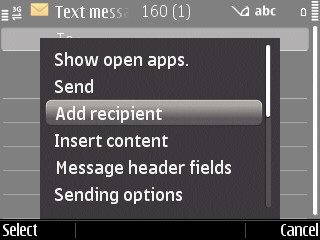
The email app refused to sync my inbox initially (left); you need to explicitly add text recipients instead of just typing their names (right)
The one other idiosyncratic move on Nokia's part was to not allow entering contacts by name in the texting application. In this day and age, having to remember and enter a contact's number instead of just typing their name with the phone suggesting contacts as you type is laughable. There is a way to “Add Recipient(s)” via the menu, but this is a smartphone, and it’s not the year 2000. Come on guys, get it together.
Performance, Battery Life and Call Quality
As I mentioned earlier in the review, the E5 is quite a usable phone, as long as you remain within the confines of the Symbian OS. I have included Opera Mobile 10 numbers on the E5 for reference.
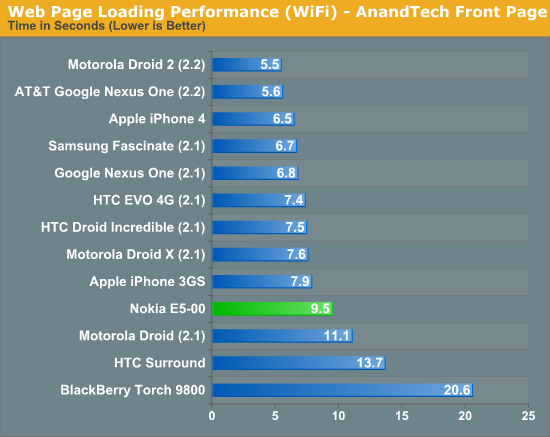
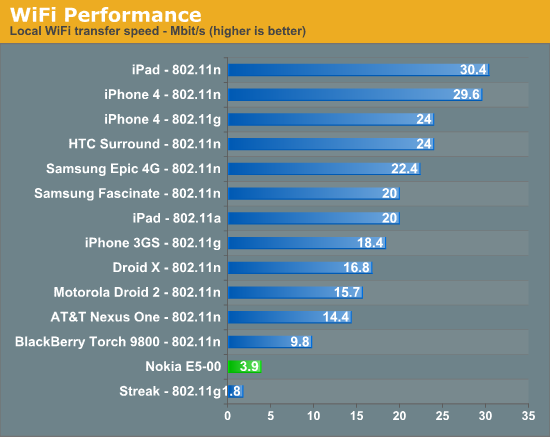
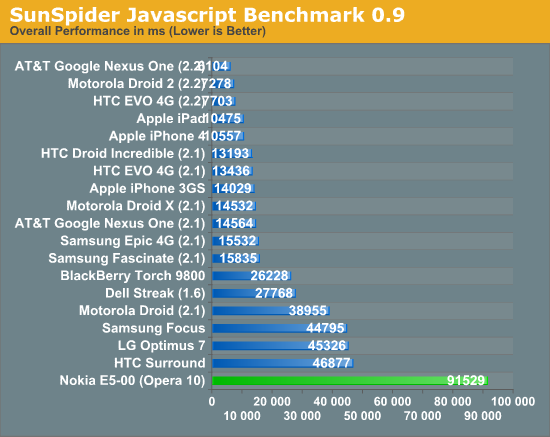
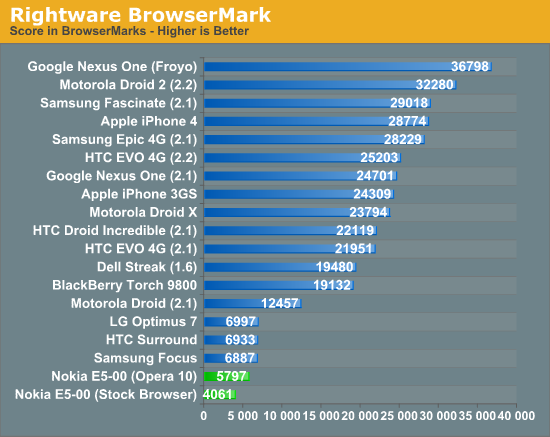
During the page load testing, I noticed an interesting behavior; the E5 would just stop loading a page that’s more than 1-1.5MB after a couple of seconds when over WiFi. Because of this, Engadget.com was stuck at about 1.3MB for more than 3 minutes before I decided to call it quits. I noticed the same behavior while running the Anandtech battery test suite over WiFi where the phone would just refuse to load pages after iterating two times through our battery life test suite. The only way around it was to either stop and reload the page or close and reopen the browser, but neither of these worked long enough to actually complete our tests.
Battery Life
The BL-4D 1200 mAh battery powering the E5 is a step down from the 1500 mAh one found in the E72 (although it is the same found on Nokia’s current flagship, the N8). This means the talk time is going to take a hit compared to the E72, but the E5 manages to post some pretty respectable numbers. Also, the official numbers indicate that the standby time for the E5 is an incredible 25+ days while non-3G talk time is north of 15 hours. Under normal usage which included some voice calls, push-email turned on, some surfing and texting, I could get away with not charging the phone for almost 3 days.
For these tests, we ran our standard page loading suite which loads through a few dozen pages endlessly until the battery dies. Screen brightness is set to 50% and all extraneous processes are killed. The WiFi test is again missing because the E5 mysteriously refused to load our test suite after a few iterations in either the default browser or Opera.
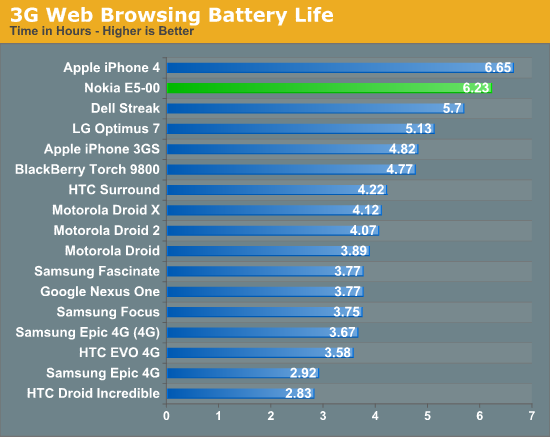
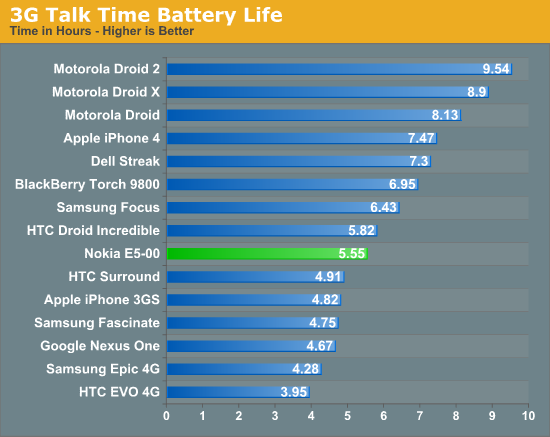
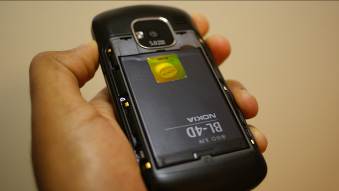
The 1200 mAh battery in the E5
Call quality on the E5 was good overall. The sound was crisp and clear and the quality remains good even at lower signal strengths. The E5 seems to hold on to signals noticeably better than my Palm Pre Plus on AT&T in the Bay Area. Of note is the fact that the E5 kept alternating between 3G and 3.5G (HSDPA) once in a while even when kept at the same location. Average 3G speed measured a surprisingly low 725 kbps.
The speakerphone on the E5 is actually very clear and usable. It’s adequately loud to have a conversation in a normal environment with some background noise. It also holds on well at high volume without any distortions and the voice sounds quite natural albeit flat. The same goes for the ringtones which actually sound really good. Coupled with some effects Nokia dubs as “3D Ringtones”, the speaker is well upto its task. Also, being a Quad-Band GSM/UTMS device, you can expect to use the E5 in most parts of the world.
Conclusion
Never have I both loved and hated a device as much as the Nokia E5-00. Before we move on to my thoughts on the E5 itself, let’s get some facts straight here. Symbian v9.x is old and dated and there really is no other way of putting it. While it certainly gets the job done, and in some cases does pretty well, it still is an aging platform that doesn’t try very hard to hide its shortfalls. Ask for anything beyond basic smartphone usage and you’re going to be quite disappointed. And this is assuming you can actually get around the phone without getting extremely frustrated with the UI. The one and only exception to this is the very good Ovi Maps app.
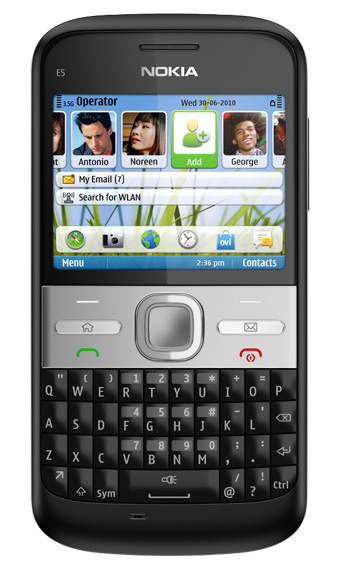
That being said, the E5 as a device definitely plays to its strengths. It is a solid messaging phone with one of the best keyboards I’ve had the pleasure of using, to go along decent battery life and very good build and solid call quality. It’s a pity that it is burdened with an OS that can trace its roots to the last decade and has a screen that doesn’t do the rest of the hardware any justice. Comparing the Nokia E5-00 to the latest and greatest smartphones running iOS, Android, Windows Phone 7, WebOS, etc. simply doesn’t make sense, especially considering the fact that it costs about the same unlocked as most of those phones do on contract.
Where the E5 makes a very solid case for itself is if you are currently on the lookout for a Blackberry alternative, because now we have a very compelling device in the E5. And Nokia doesn’t try hard to hide this. Everything about this phone shouts Blackberry competitor and Nokia has made sure that it is a worthy competitor indeed. Unless your organization is heavily dependent and integrated with the Blackberry Enterprise backend, you should definitely give this phone a shot. As your primary or only phone, the E5 and S60 quickly become frustrating, confusing, and at times, just plain irritating. But as a secondary work/business phone, it does what it is supposed to do very well and doesn't get in your way.

